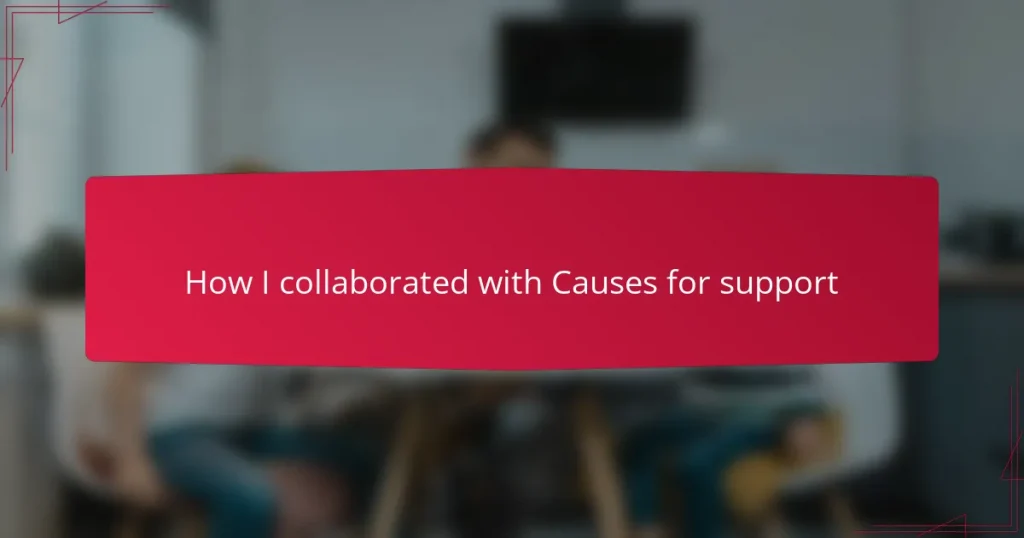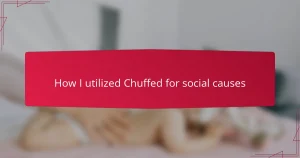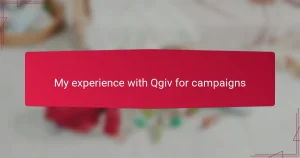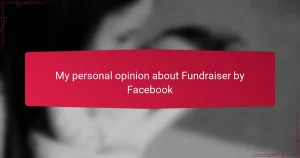Key takeaways
- Effective San Diego family fundraising emphasizes community engagement through events, collaborations, and personalized storytelling.
- Identifying local causes involves understanding community needs and forming genuine connections with those affected.
- Successful fundraising strategies balance traditional methods and digital outreach while focusing on relationship-building and shared goals.
- Measuring success includes tracking both financial outcomes and the positive impact on families and community well-being.
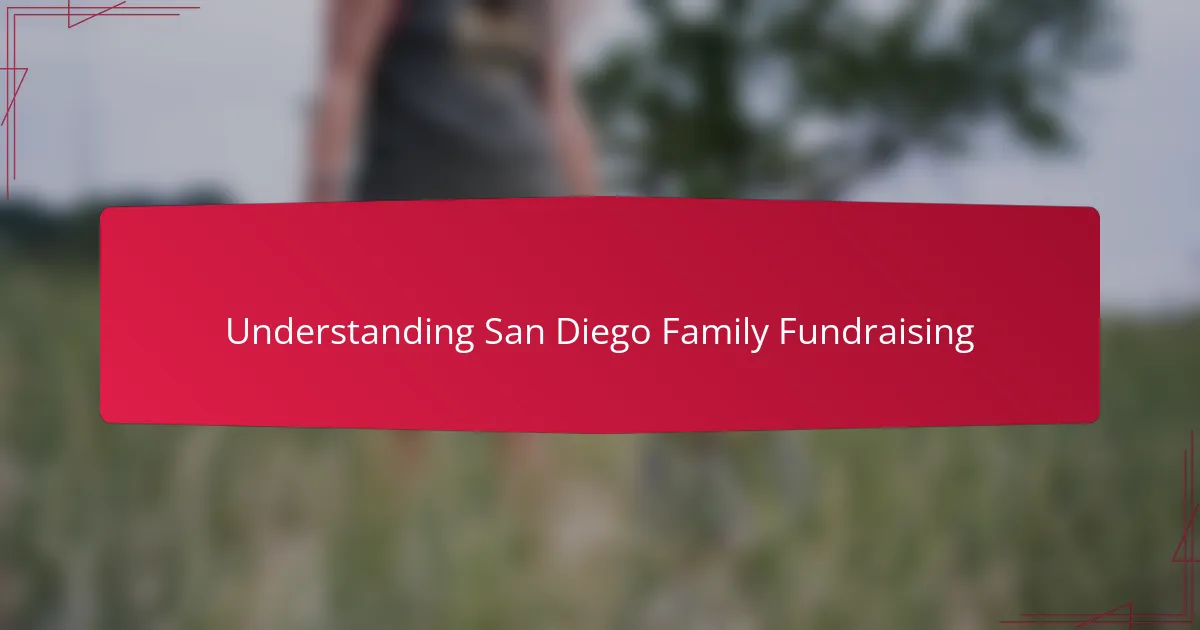
Understanding San Diego family fundraising
San Diego family fundraising is a unique blend of community spirit and local support, deeply rooted in the values I’ve seen firsthand. When families come together here, it’s more than just raising money; it’s about building a network of trust and shared goals, which has always inspired me during my collaborations.
From organizing local events to leveraging social media for awareness, several approaches make fundraising effective in San Diego. Here are some strategies that I found particularly impactful:
- Hosting neighborhood block parties to encourage community bonding
- Partnering with local businesses for sponsorships and donations
- Utilizing social media platforms to reach wider audiences
- Creating engaging storytelling around the cause to connect emotionally
- Offering family-friendly activities that draw participation from all ages
These methods have consistently helped me turn individual efforts into meaningful collective action.

Identifying local causes for support
Finding the right local causes to support in San Diego has always started for me with listening—really listening—to the stories within my own neighborhood. I remember attending a small community meeting where a single mother shared her struggles to keep the local park safe and clean for her kids. That moment made me realize that identifying a cause isn’t just about statistics or popularity; it’s about the real people whose lives we can touch directly.
Have you ever wondered what makes a cause truly worth backing? For me, it’s when the issue resonates with families—something that impacts our daily lives and sparks genuine concern. While researching, I found organizations focused on food security and youth education often drew the most heartfelt responses from my network. These causes felt personal, not distant, and that connection made all the difference in rallying support.
Sometimes, the best way to spot a cause is to walk around the community and observe what’s missing or broken. I once noticed a local library struggling with damaged books and outdated resources. Bringing that to light led me to partner with a group dedicated to revitalizing educational spaces for kids. It’s amazing how much you discover just by paying attention and asking the right questions. Wouldn’t you agree that the causes closest to home often have the biggest impact?

Planning effective fundraising strategies
Planning effective fundraising strategies starts with understanding the unique dynamics of the San Diego community. I’ve learned that tailoring each plan to fit local values and family rhythms makes all the difference—like choosing the right time for events when families are most likely to join in. It’s not just about setting goals but about weaving those goals into the daily lives of the people you want to engage.
One tactic I swear by is mixing traditional outreach with digital tools. In one campaign, combining neighborhood flyers with lively social media posts created a buzz that neither method could achieve alone. Have you ever noticed how a well-timed Facebook story or Instagram post can spark conversations and draw in participants who might otherwise stay on the sidelines?
Budgeting and resource allocation also play a crucial role. Early on, I underestimated the power of small expenditures on quality materials and thoughtful incentives, which later proved to be key in sustaining momentum. It made me realize that investing wisely—whether in printed materials or volunteer training—creates a ripple effect, turning one-time donors into long-term supporters. Isn’t it fascinating how the smallest details can shape the biggest outcomes?

Building partnerships with community organizations
Building partnerships with local community organizations was a pivotal step in amplifying our fundraising efforts. I found that genuinely understanding each organization’s mission helped me connect on a deeper level. For example, working alongside a neighborhood food bank not only expanded our reach but also made me feel part of something truly impactful, seeing the direct benefit unfold in real time.
From my experience, strong partnerships require clear communication, shared goals, and mutual respect. Here are some strategies that worked well for me:
- Attend local events to meet representatives and learn about their causes firsthand
- Identify common values and objectives to create meaningful collaboration
- Offer support beyond fundraising, such as volunteering or co-hosting community activities
- Maintain regular updates and celebrate joint successes to build trust
- Be flexible and open to new ideas that can strengthen the partnership
These approaches helped transform simple collaborations into lasting relationships that energized our families and the broader community.
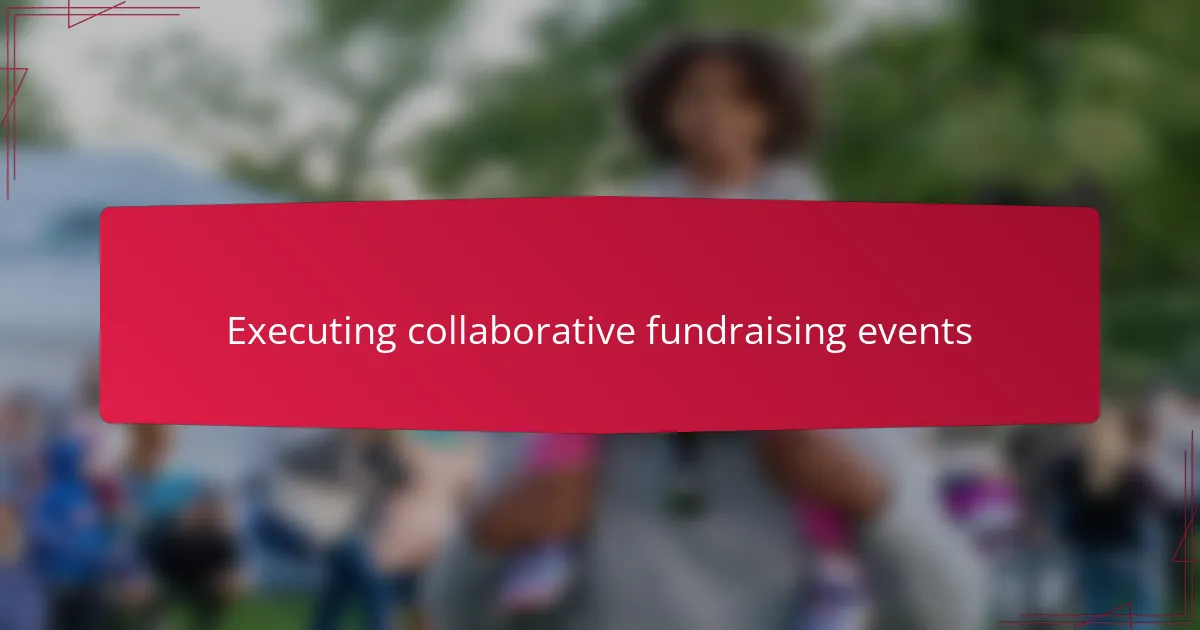
Executing collaborative fundraising events
Executing collaborative fundraising events requires careful coordination and shared enthusiasm. I remember one event where aligning schedules with partner organizations felt like solving a puzzle, but once we locked in a date that worked for everyone, the energy was contagious—families, volunteers, and local groups all came together with a unified purpose. Have you ever experienced that rush when everything finally clicks into place?
Logistics play a huge role in making these events successful. From securing a venue that welcomes families to organizing volunteers who feel genuinely appreciated, the details can either build momentum or create roadblocks. For me, creating clear roles and timelines helped keep everyone on track, turning potential chaos into a smooth community celebration that raised both funds and spirits.
What makes collaborative events truly memorable isn’t just the money raised but the connections formed along the way. I love how these gatherings become a space where stories are shared, hands are joined, and hope grows stronger—reminding me why all the hard work is worth it. Isn’t that the heart of fundraising in San Diego’s family-focused neighborhoods?
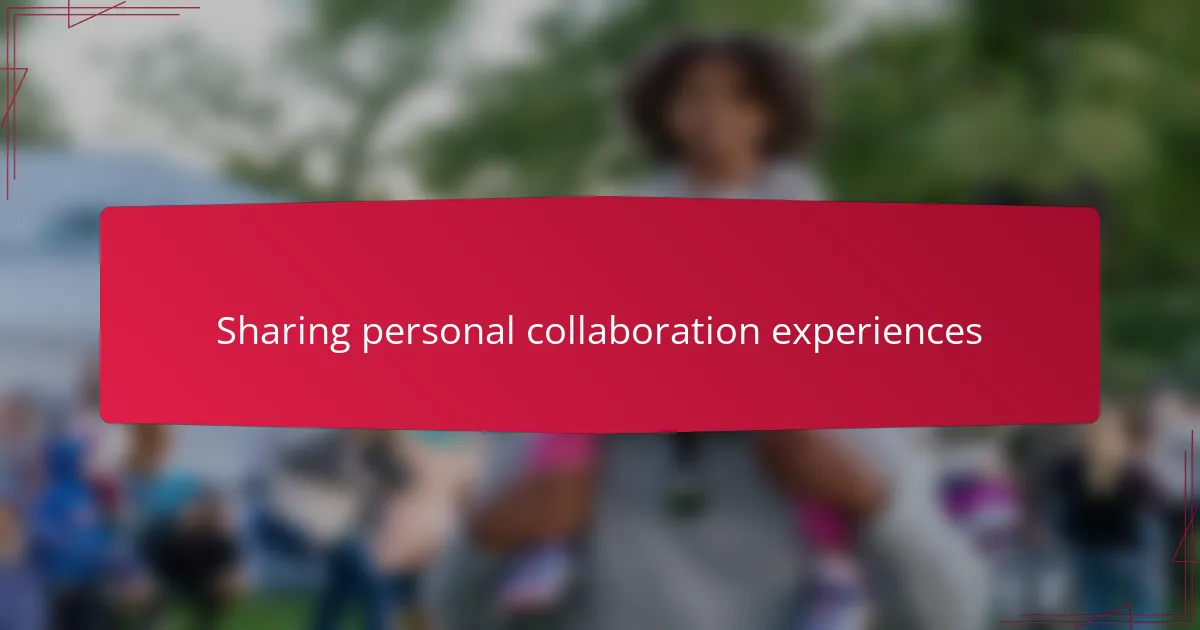
Sharing personal collaboration experiences
One collaboration that stands out to me was with a local youth mentoring program. I initially reached out simply hoping to support their cause, but as we worked together, I realized how vital clear communication and shared enthusiasm were to our success. Have you ever noticed how a genuine connection can turn a project from a task into a passion? That’s exactly what happened, and it kept everyone motivated beyond expectations.
There was also a time when I partnered with a family-focused environmental group to host a cleanup event. Coordinating between multiple households—and their busy schedules—felt challenging, but once the event day arrived, the collective spirit was incredible. Seeing kids excited to make a difference reminded me why collaboration isn’t just practical; it’s deeply rewarding on a personal level.
Reflecting on these experiences, I’ve learned that every collaboration brings its own surprises and lessons. What struck me most was how trust builds over time, even in small moments of shared effort. Have you ever experienced that subtle shift when strangers start to feel like a community? Those are the moments that make supporting causes truly meaningful.

Measuring fundraising success and impact
Measuring fundraising success goes beyond just hitting a dollar amount. When I worked with Causes for Support, I realized that understanding the real impact on families in San Diego was equally important. Seeing how the funds helped provide resources for children’s education and health made every contribution feel meaningful.
Tracking specific outcomes helped me stay connected to the cause and motivated the team. Here’s what I focused on to measure our success and impact accurately:
- Total funds raised compared to our initial target
- Number of families directly benefiting from the donations
- Improvement in access to essential services for local families
- Community engagement levels, such as volunteer participation
- Feedback and stories from families who received support
- Long-term changes observed in beneficiary well-being and opportunities
This approach allowed me to celebrate more than just numbers—it showed how together we created real change.
